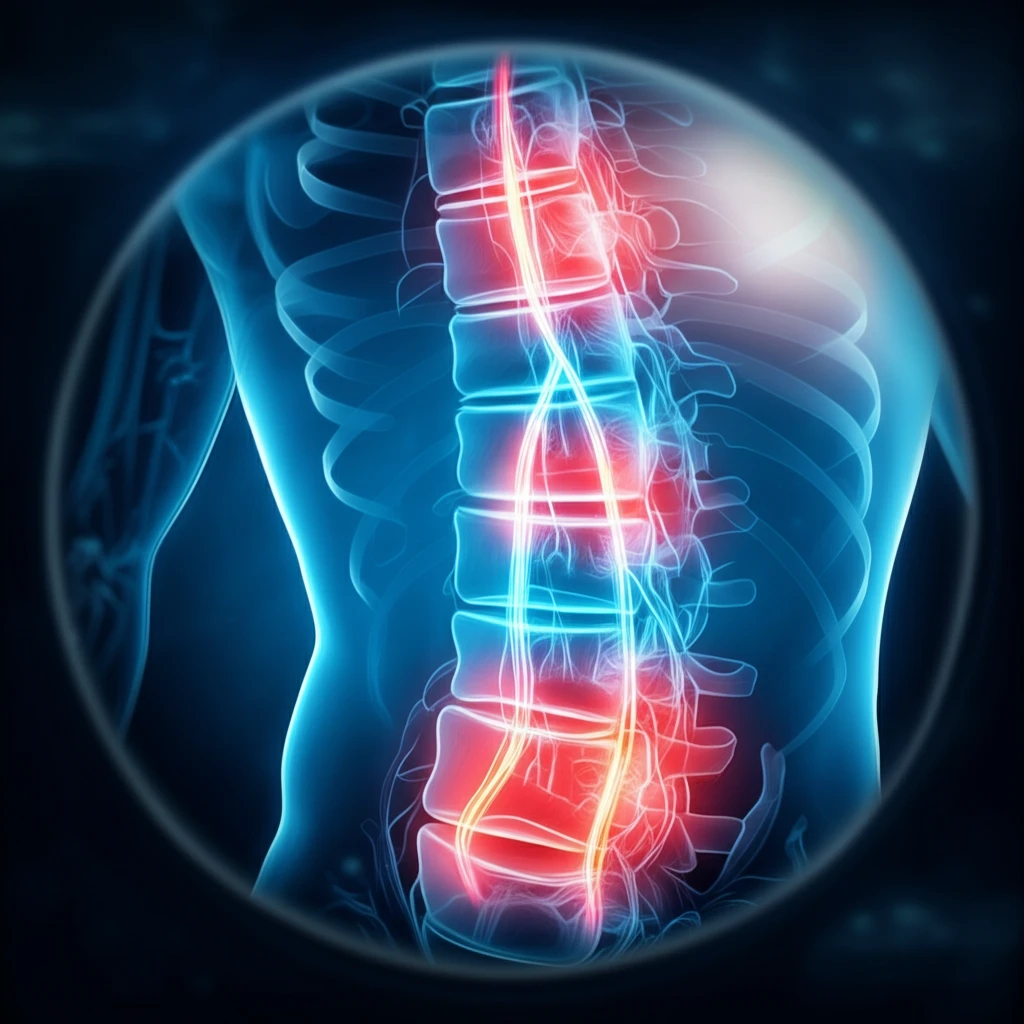
Unlocking Back Pain Relief: How Endoscopic Spine Surgery Visualizes and Treats Pain Generators
"Discover the innovative approach of in-vivo endoscopic visualization for diagnosing and surgically treating pain at its source, offering new hope for chronic back pain sufferers."
For years, managing back pain has largely relied on methods that only offer short-term fixes. Traditional approaches, such as injections and medication, often mask the symptoms without addressing the root cause. These treatments depend on the body's own healing processes to reduce pain, which can be unpredictable and inconsistent.
However, a groundbreaking approach is changing the landscape of back pain treatment. By using an endoscope to visualize the specific areas causing pain, surgeons can now target and treat these pain generators directly. This method opens the door for surgical decompression and ablation, precisely addressing the source of the pain.
Endoscopic spine surgery stands out due to its ability to use specialized tools and techniques, including mobile cannulas, advanced endoscopes, and RF and laser technology, to effectively treat the pain generator. While traditional surgeries involve large incisions and more extensive tissue disruption, endoscopic methods offer a less invasive alternative, especially when combined with intradiscal therapies.
Visualizing the Invisible: How Endoscopy Pinpoints Pain Sources

The Yeung Endoscopic Spine Surgery™ (YESSTM) technique represents a significant advancement in how we approach spinal pain. This method uses a series of precise steps to identify and treat pain generators within the spine:
- Epiduralgram: A non-ionic contrast is injected to create a foraminal epiduralgram, which highlights the anatomy of the area and reveals potential issues like herniated discs or stenosis.
- Chromo-Discography: This involves injecting dye into the disc to assess its integrity and identify any tears or abnormalities that could be causing pain.
- Tissue Staining: Vital tissue staining helps differentiate between healthy and unhealthy tissue, guiding the surgeon during decompression.
- Foraminoplasty: The lateral recess is decompressed, and the exiting and traversing nerves, along with the dorsal root ganglion (DRG), are carefully visualized. The endoscope allows the surgeon to see anomalies that might be missed by traditional imaging.
- Exploration: The epidural space is thoroughly examined, and the “hidden zone” of Mac Nab is probed under local anesthesia, allowing the patient to provide feedback during the procedure.
- Removal: Extruded or sequestered nucleus pulposus and other problematic tissues are removed using biportal or multiple portal techniques.
- Rhizotomy: The branches of the dorsal ramus are carefully ablated to denervate the facet joint, reducing pain signals.
The Future of Spine Care: Minimally Invasive and Highly Visual
Endoscopic spine surgery requires specialized skills and training for spine surgeons. By incorporating interventional pain management techniques with surgical precision, and by confirming the results under local anesthesia, we can ensure rational and effective treatment of spinal pain. New procedures focusing on intradiscal therapy, disc augmentation, biologics, annular modulation, and tissue neuromodulation are well-suited for this minimally invasive approach. As technology evolves with robotics and biologics, endoscopic foraminal access to the lumbar spine promises to transform spine care, offering true minimally invasive access without destabilizing the dorsal muscle column.
